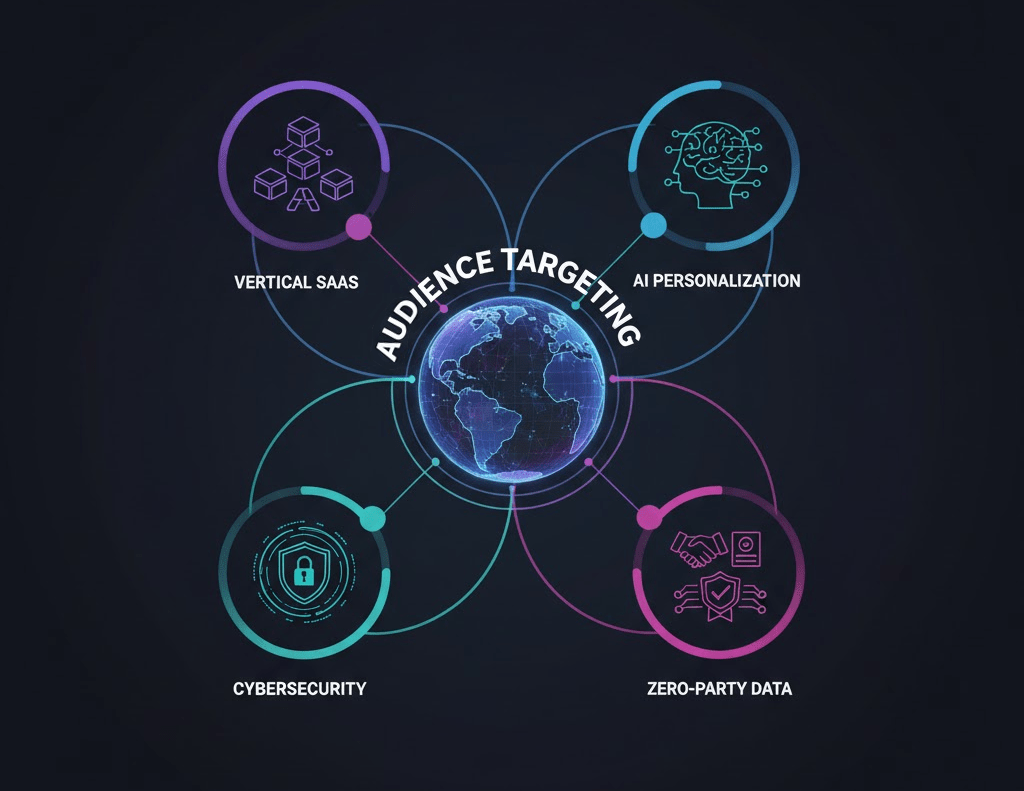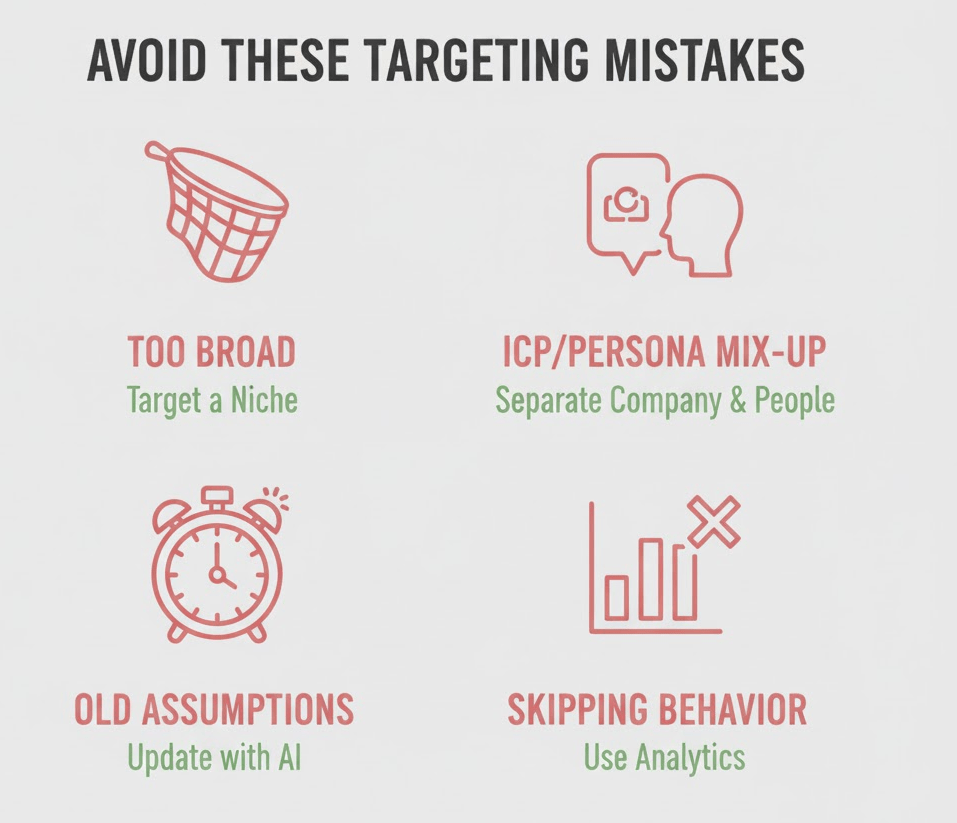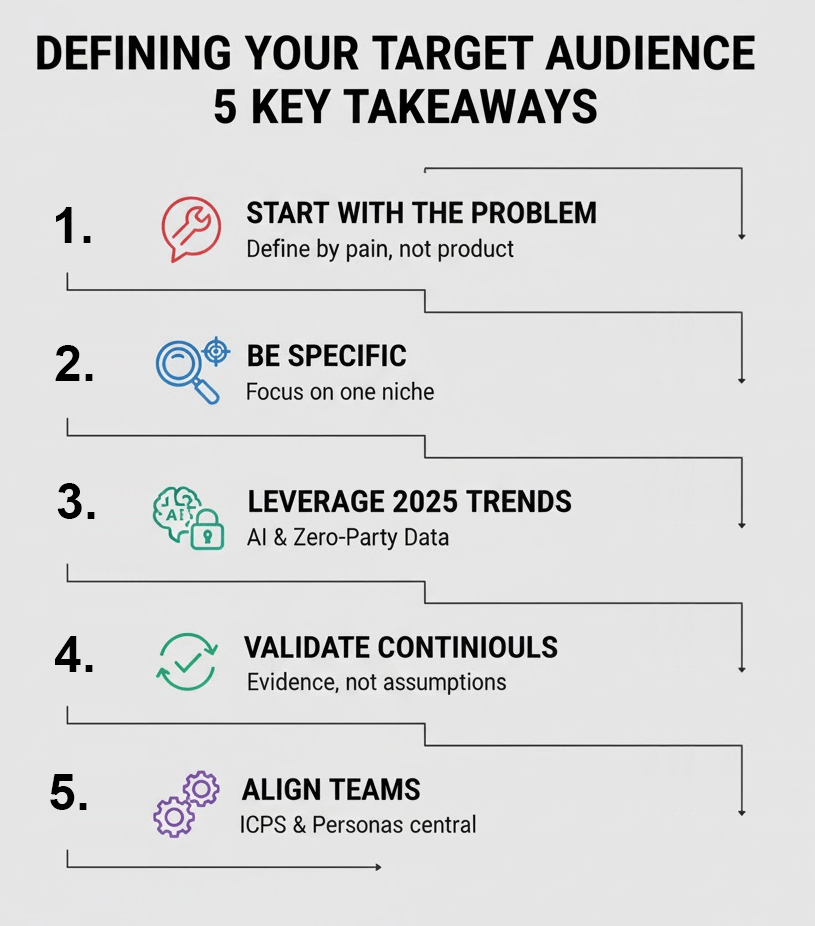Why Defining Your Audience Is the First Step to Real Growth
Defining your audience transforms your SaaS from a generic tool into a tailored solution for those who need it most. In the AI era, where 42% of startups fail due to poor product-market fit, precision and empathy are your competitive edge. By leveraging AI analytics, zero-party data, and iterative validation, startups that know exactly who they serve will win faster, grow stronger, and sustain longer in 2025’s dynamic markets of AI, data privacy, and cybersecurity.
Successful SaaS startups achieve traction by solving a specific problem for a well-defined audience before scaling. Slack is a classic example: it didn’t start as a universal messaging tool but as a solution for tech teams drowning in email threads, enabling fast collaboration among developers.
In 2025, the Software as a Service (SaaS) market is worth approximately $250 billion and is expected to reach nearly $300 billion by the end of the year, according to recent industry data. As SaaS adoption accelerates — driven by AI integration, remote collaboration, and cybersecurity demands — precision targeting has become essential for sustainable growth. Defining your audience now shapes your product roadmap, pricing, sales strategy, and company culture, ensuring long-term product–market fit in an era of AI analytics and strict data privacy laws like GDPR and CCPA.
2025 Trends Shaping Audience Targeting
The SaaS landscape is being reshaped by AI, cybersecurity, and data ethics. Understanding these forces helps startups define audiences with greater precision.

1. AI-Powered Personalization
AI tools like predictive analytics can now segment audiences in real time, reducing churn by up to 25% through tailored onboarding and feature recommendations.
For instance, platforms like Grok analyze user behavior patterns to predict intent, enabling hyper-targeted campaigns that align product messaging with customer needs.
2. The Rise of Zero-Party Data
With the decline of third-party cookies under GDPR and CCPA, zero-party data—information users voluntarily share via surveys, chatbots, or preference centers—has become the foundation of ethical targeting. SaaS companies using zero-party data report 20% higher engagement rates, proving that transparency builds both trust and precision.
3. Cybersecurity Imperatives
As AI-driven threats like deepfakes and phishing automation grow, startups are prioritizing zero-trust architectures and targeting high-risk sectors such as finance and healthcare. These audiences demand AI-enhanced protection, compliance visibility, and seamless integration with existing systems.
4. The Vertical SaaS Surge
Niche SaaS markets — especially in AI, cybersecurity, and sustainability — are expanding rapidly. Usage-based pricing and modular design appeal to cost-conscious SMBs.
Together, these trends point to one conclusion: in the AI era, audience definition must be data-driven, ethical, and dynamic.
Common Mistakes to Avoid
Even experienced founders stumble when defining their audience. Avoid these common pitfalls:
- Being too broad: Targeting “all SMBs” dilutes your message.
Fix: Focus on a niche, like AI-adopting fintech firms - Confusing ICP and Buyer Personas:
Your Ideal Customer Profile (ICP) defines companies; your personas represent people. Mixing them confuses teams and clouds your strategy. - Relying on outdated assumptions:
The AI landscape evolves fast — what worked last quarter may already be obsolete.
Fix: Revalidate your ICP quarterly using real-time AI analytics and customer feedback. - Ignoring behavioral data:
Firmographics tell you who they are; behavioral data reveals how they buy.
Fix: Use tools like Mixpanel, Amplitude, or zero-party feedback loops to understand usage intent.

9 Steps to Define Your Target Audience with Precision
Step 1: Start with the Problem, Not the Product
Identify the core problem your product solves:
- What pain point do you address?
- Who feels it most?
- What’s the cost of inaction (e.g., revenue loss, compliance risk, inefficiency)?
Formula:
We help [type of person/company] who struggle with [specific problem] to achieve [desired outcome].
Example: We help remote SaaS teams struggling with tool overload streamline collaboration and meet delivery deadlines.”
In 2025, consider AI-driven pain points, like data silos across machine learning workflows or vulnerabilities from synthetic threats.
Step 2: Outline Core Segments
Map out your audience by:
- Industry: Fintech, cybersecurity, healthcare, or AI-driven verticals
- Company Size: Startup, SMB, or enterprise
- Job Titles: Decision-makers (e.g., CTOs, CISOs) and end-users
- Geography: Regional or global, factoring in local privacy regulations
Prioritize high-growth verticals such as AI tools, cybersecurity, and sustainability tech, refining further by team size or budget.
Step 3: Add Depth with Firmographics, Behavioral, and Psychographic Traits
Go beyond demographics with a layered approach:
- Firmographics: Revenue, growth stage, tech stack (e.g., AWS, Salesforce), employee count
- Behavioral Traits: Trial-to-paid conversion, tool preferences, engagement frequency
- Psychographics: Risk tolerance, innovation mindset, and AI adoption readiness
Example: A cybersecurity SaaS might target Series A–C fintech firms with 20–100 employees using CrowdStrike, eager for AI-driven detection but cautious about quantum encryption risks.
Step 4: Identify Pain Points and Goals
Pain points define urgency; goals define value.
Example:
- A reporting SaaS targets marketers spending hours compiling dashboards, seeking to save time and prove ROI.
- A cybersecurity SaaS focuses on CISOs overwhelmed by AI-enhanced phishing attacks, aiming for compliance and real-time detection.
Use social listening (e.g., X or Reddit) to identify recurring phrases like “AI security gaps” or “tool overload.”
Step 5: Create an Ideal Customer Profile (ICP)
Your ICP outlines the company archetype most likely to benefit from and sustain value with your solution.
Example ICP:
Fintech SaaS firms with 50–200 employees in North America, $5M–$20M ARR, using Okta and Salesforce, struggling with AI-driven phishing risks.
Key variables:
- Industry
- Company size
- Tech stack
- Budget range
- Core challenge
Step 6: Develop Buyer Personas
Personas represent the real decision-makers behind your ICP.
| Attribute | Example |
|---|---|
| Name & Role | “Cybersecurity Chris,” CISO at a fintech firm |
| Goals | Mitigate AI-driven threats and ensure compliance |
| Challenges | Budget constraints, integration friction |
| Objections | Cost, vendor lock-in |
| Sources | X, Darktrace blogs, industry webinars |
Example:
Zoom’s early focus on remote teams needing seamless connectivity guided its design and messaging from day one.
Step 7: Validate with Real Data
Treat your ICP and personas as hypotheses until validated. Use:
- Customer Interviews: Conduct 10–15 discovery calls to understand workflows
- Surveys: Collect structured feedback via Typeform or Google Forms
- Behavioral Analytics: Track engagement in Mixpanel, Amplitude, or Hotjar
- AI Insights: Analyze sentiment from X or review data with Grok
- Competitive Analysis: Study rivals’ campaigns, testimonials, and pricing
Track your CAC (Customer Acquisition Cost) — what you spend to acquire a customer — and LTV (Customer Lifetime Value) — the total revenue a customer generates over time — alongside conversion rates to pinpoint your most valuable segments.
Step 8: Apply Insights Across Teams
Alignment multiplies precision:
- Product: Build features that solve your audience’s top pain points
- Marketing: Create content that reflects their journey and language
- Sales: Customize demos and case studies for key personas
- Customer Success: Tailor onboarding and retention around workflows
According to Customer Success Trends Report, 93.7% of companies that link customer success to revenue performance report stronger growth in NRR (Net Revenue Retention).
Step 9: Iterate as Markets Evolve
Your audience will shift as your product matures. Revisit your ICP and personas quarterly (for startups) or bi-annually (for scaling SaaS). Track:
- Fastest-adopting segments
- Highest-LTV cohorts
- New use cases (e.g., AI integration for legacy systems)
In fast-changing domains like AI and cybersecurity, continuous iteration ensures long-term relevance.
Key Takeaways
- Start with the problem: Define your audience by pain, not by product.
- Be specific: Focus on one niche before scaling.
- Leverage 2025 trends: Use AI analytics and zero-party data for ethical precision.
- Validate continuously: Replace assumptions with real evidence.
- Align teams: Make ICPs and personas central to every department.

Quick-Start Worksheet
| Category | Definition |
|---|---|
| Core Problem | We help ___ who struggle with ___ to achieve ___ |
| ICP | Industry: ___ Size: ___ Tech: ___ Pain Point: ___ |
| Primary Persona | Name/Title: ___ Goal: ___ Frustration: ___ Info Source: ___ |
Final Thought
Defining your audience transforms your SaaS from a tool into a tailored solution for people who truly care. In the AI era, precision and empathy drive growth, not scale alone.
As AI, data privacy, and cybersecurity reshape markets, startups that know exactly who they serve will win faster, grow stronger, and sustain longer. In 2025, precision is your competitive advantage.












